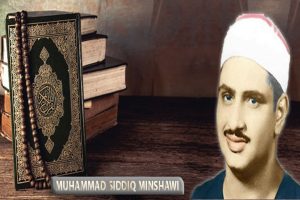The heart of who attends a gathering held for the revival of our doctrines, shall not die on the day when hearts die.
Ali ibn Musa al-Rida (a)
Table of Contents
ToggleAn introduction to tajwid
Tajwid, or the proper pronunciation of the Heavenly Quran, is an essential aspect of studying the Grand Quran for Muslims worldwide.
It is the science of reciting the Sacred Quran correctly, following the rules established by the Prophet Muhammad (S) and his companions.
Tajwid focuses on correct pronunciation, enunciation, and intonation to enhance the beauty and clarity of the Quranic recitation.
This essay will introduce the importance of Tajwid, its history, and its relevance in the lives of believers.
The word “Tajwid” is derived from the Arabic root word “j-w-d,” meaning to make something good, better, or excellent.
In terms of Quran recitation, Tajwid refers to making the recitation of the Noble Quran excellent in terms of sound, melody, and pronunciation. Muslims believe that the Grand Quran is the direct word of Allah, revealed through the Angel Jibril (Gabriel) to Prophet Muhammad (S).
Therefore, the utmost care and precision are necessary when reciting the Grand Quran, as it is a form of worship and a means to establish a spiritual connection with Allah.
The history of Tajwid can be traced back to the time of the Prophet Muhammad (S).
At that time, the Holy Quran was primarily transmitted orally, and the Prophet himself would recite the verses to his companions.
The companions, in turn, learned from him and transmitted the correct recitation to subsequent generations.
This oral transmission ensured the preservation of the Quran’s text and its correct pronunciation.
Basic Pronunciation
The correct pronunciation of the Sacred Quran is of utmost importance for Muslims around the world.
Tajwid, the science of proper recitation, ensures that the words of Allah are conveyed accurately and with reverence.
Basic pronunciation in Tajwid is crucial as it allows individuals to connect with the divine message and understand its true essence.
basic pronunciation in Tajwid helps in preserving the originality and authenticity of the Heavenly Quran.
The Prophet Muhammad himself recited the Glorious Quran with precise pronunciation, and his companions followed suit.
By adhering to basic rules such as elongation (madd), stopping (waqf), and merging (idgham), we ensure that we are reciting exactly what was revealed by Allah.
Moreover, proper pronunciation enhances comprehension.
The Arabic language has unique sounds that may not exist in other languages.
By mastering these sounds through Tajwid, individuals can better understand the meaning behind each word and verse.
This deepens their connection with Allah’s message and allows for a more profound spiritual experience.
Furthermore, basic pronunciation in Tajwid promotes unity among Muslims worldwide.
When everyone follows a standardized method of recitation, regardless of their native language or dialect, it creates a sense of harmony within the global Muslim community. It eliminates confusion or misinterpretation caused by different pronunciations.
Basic pronunciation in Tajwid is essential for maintaining accuracy, understanding, and unity within the Muslim community.
By adhering to these principles when reciting the Sacred Quran, individuals can truly appreciate its divine message and connect with Allah on a deeper level.
Articulation Points
The Tajwid of the Noble Quran is a discipline that focuses on the correct pronunciation and articulation of the words and verses of the Quran.
Within this discipline, there is a specific emphasis on the various articulation points (Makhraj) that determine the correct production of sounds in Arabic.
This essay will explore the historical context, key figures, and the impact of articulation points in the Tajwid of the Sacred Quran. It will also identify and analyze influential individuals who have contributed to this field.
This essay will discuss both positive and negative aspects, along with potential future developments related to articulation points in Tajwid.
The history of Tajwid and its focus on articulation points can be traced back to the time of Prophet Muhammad (S).
The correct recitation of the Holy Quran was crucial to accurately conveying its message and preserving its integrity over generations. Early Muslim scholars recognized the need for standardized rules of pronunciations and articulation.

The Impact of Articulation Points in Tajwid
- Preservation of Pronunciation:
The study and application of articulation points in Tajwid contribute to the preservation of the original pronunciation of the Heavenly Quran. This attention to detail ensures that the words and verses are recited as intended by the Creator, maintaining the linguistic beauty and integrity of the Glorious Quran. - Enhanced Understanding:
By understanding and applying the correct articulation points, the reciter gains a deeper understanding of the linguistic nuances and meanings of the Quranic text. The study of Tajwid allows for a more profound comprehension of the message and its intended impact. - Facilitating Memorization:
The knowledge and application of articulation points aid in the memorisation process of the Noble Quran. By precisely pronouncing each letter, the reciter can form a mental connection and remember the sequence of verses more effectively. This facilitates the memorization and preservation of the divine text.
The increasing availability of online resources and educational platforms like DarulQuran has the potential to enhance the understanding and accessibility of Tajwid, including articulation points.
Technological advancements such as audio and visual analysis tools could further improve the accuracy and precision of Tajwid recitation.
Characteristics of Letters
Tajwid, the art of proper pronunciation of the Sacred Quran, is an integral aspect of learning and reciting the holy book for Muslims.
It not only ensures the accurate recitation of the words but also adds a melodic beauty to the recitation.
In order to understand and excel in Tajwid, one must delve into the characteristics of letters present in different levels of learning.
This essay aims to describe the key features of letters in Tajwid at various levels.
At the basic level, one encounters the letters of the Arabic alphabet.
These letters are divided into two categories: the letters of sustenance (huroof al-madd) and the remaining letters.
The letters of sustenance, namely Alif, Waw, and Ya, are elongated when followed by a sukoon (a diacritical mark indicating the absence of a vowel sound).
This elongation is known as madd and holds significance in Tajwid as it affects the melody and pronunciation of the words.
Moving on to the intermediate level of Tajwid, a learner encounters the concept of tanween (nunation).
Tanween refers to the addition of a short vowel sound “n” (non-existent in the spelling) to a letter. The three forms of tanween, namely fat-ha, kasra, and damma, indicate the short vowel sounds of “an,” “in,” and “un” respectively.
The correct pronunciation of tanween is crucial in Tajwid to ensure the harmonious recitation of the verses.
The advanced level of Tajwid introduces the concept of letter attributes (sifaat al-huruf).
These attributes include heavy (thiqal), light (khafif), prolonged (mudgham), and quick (muraqlaq) letters.
The heavy letters require more emphasis and a longer duration of pronunciation compared to the light ones.
The prolonged letters require slight prolongation, while the quick letters are pronounced rapidly without prolongation.
Understanding and applying these attributes to the letters enable a learner to create a melodious and balanced recitation of the Grand Quran.
Furthermore, Tajwid emphasizes the correct pronunciation of letters with similar characteristics, For instance, the differentiation between the heavy and light forms of “ra” (ر) is crucial.
The light form, known as “ra with fat-ha” (رَ), is pronounced by lightly tapping the tip of the tongue on the upper part of the mouth.
On the other hand, the heavy form, known as “ra with damma” (رُ), is pronounced by rolling the tip of the tongue up and pronouncing it with more emphasis.
This distinction maintains the melodic flow and clarity of the recitation.

The rules of Tajwid
The rules of Tajwid are an intricate system that guides learners on the correct recitation of the holy Quran.
As students’ progress through their journey of Tajwid, they encounter various levels of complexity, each building upon the previous one.
At the foundational level, learners focus on the basic rules of Tajwid, acquainting themselves with the distinct characteristics of each letter.
With diligence and practice, learners become adept at recognizing the points of articulation within their mouths, throats, and lips.
This enables them to pronounce each letter precisely, avoiding any confusion or misinterpretation.
As learners advance to the intermediate level, their understanding of Tajwid deepens. They dive into the realm of elongation, exploring the art of prolonging specific letters.
The rules of Madd, divided into mandatory and permissible elongations, bring a melodic aspect to their recitation.
By meticulously following these rules, learners begin to infuse the Grand Quran with beautiful rhythms, elevating their connection with the divine words of Allah.
At the advanced level of Tajwid, learners refine their recitation to an astonishing level of precision.
They familiarize themselves with Tajweed al-Harakaat, diligently pronouncing and applying diacritical marks, such as fathah, kasrah, and dammah.
These marks guide them in correctly pronouncing short vowel sounds, ensuring that the Quran is recited with utmost accuracy.
Furthermore, learners explore Tajwid al-Lahn, which introduces them to the subtle variations and melodious tones of certain letters.
By internalizing these advanced rules, learners elevate their recitation to a level of expertise that captivates both their hearts and the hearts of those who listen.
Tajwid encompasses a set of rules that guide learners in their journey to recite the Holy Quran with beauty, precision, and devotion. Starting from the foundational level, learners familiarize themselves with the basic characteristics of each letter and establish a strong foundation for further growth.
As they progress to the intermediate level, they explore the art of elongation, infusing their recitation with captivating rhythms.
Finally, at the advanced level, learners refine their recitation to a staggering level of precision by mastering the rules of Tajwid al-Harakaat and Tajwid al-Lahn.
Each level serves as a stepping stone towards mastery, allowing learners to deepen their connection with the divine words of Allah and embody the true essence of Tajwid.

Recitation Styles
Tajwid, the art of reciting the sacred Quran with proper pronunciation, intonation, and rhythm, is an essential aspect of Islamic education.
In order to master this art, different recitation styles have emerged at various levels of learning tajwid.
These levels are categorized based on the proficiency of the reciter and the complexity of the rules applied.
At the beginner level, reciters are introduced to the basic rules of tajwid.
They learn to pronounce each letter of the Arabic alphabet correctly and understand the different articulation points for each letter.
The Mushaf al-Madina, a widely used Quranic script, serves as a learning resource at this stage. Reciters are encouraged to recite slowly and pay close attention to the mistakes they make.
Teachers provide feedback and correct their pronunciation to ensure they develop a strong foundation in tajwid.
Moving on to the intermediate level, the recitation style becomes more refined.
Reciters learn to identify and apply the rules of tajwid when reciting longer verses and passages from the Noble Quran.
They focus on perfecting the pronunciation of specific letters and understanding the characteristics of various recitation marks, such as the shaddah.
Reciters at this level often practice with a teacher who listens carefully to their recitation and provides in-depth feedback on their intonation, articulation, and rhythm.
At the advanced level, reciters strive for precision and mastery.
They delve deeper into the intricacies of tajwid and study the various qira’at (recitation styles), such as Hafs and Warsh.
These recitation styles differ in the pronunciation of certain letters and the application of particular rules.
Advanced reciters learn to recite the Quran in multiple qira’at and are able to switch between them seamlessly.
This level of expertise requires years of practice and guidance from experienced scholars of tajwid.
Regardless of the level, reciters are encouraged to recite the Glorious Quran with sincerity and humility.
Tajwid is not merely about the technicalities of pronunciation but also about establishing a deep connection with the words of Allah.
As Prophet Muhammad (S) said, “Indeed, the one who recites the Grand Quran beautifully, smoothly, and precisely, he will be in the company of the noble and obedient angels. And as for the one who recites with difficulty, stammering, or stumbling through its verses, then for him is a double reward.”
In conclusion the levels of learning Tajwid are essential for both Quran recitation and creative writing.
By understanding the basics mastering the art internalizing the melody and applying Tajwid principles creative writers can create captivating and meaningful written content.
Tajwid not only enhances the aesthetics of writing but also ensures accurate communication of ideas.
By incorporating Tajwid into creative writing writers can elevate their work to new levels of beauty and eloquence.

















